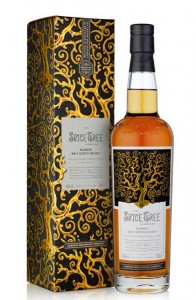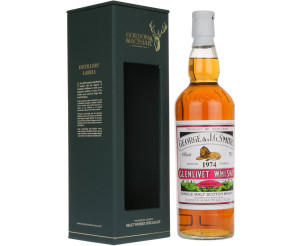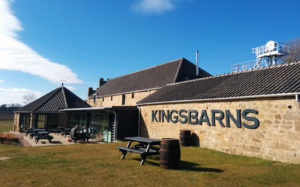Seven Of Scotland’s Independent Bottlers
By Richard Thomas

(Credit: Compass Box)
Many an American Whiskey purist scoffs at the notion of an independent bottler. Although the creations of Craft Barrel Spirits, High West and others have gained considerable appreciation, it’s still entirely common for me to run across people in whiskey bars declaring scorn for the idea that if a brand didn’t make the whiskey, it has no business selling it.
This is a peculiar notion when you consider not just the modern crop of American independent bottlers, but also that Willett Distillery got its start as the independent bottler Kentucky Bourbon Distillers in the early 1980s, before many of the people doing the scoffing were even born. Viewed from an international perspective, the scorn becomes even more peculiar, since independent bottlers are a permanent fixture in Scotch and Irish whiskeys. Indeed, many of the great blended brands we know today began as the work of merchants and grocers in the independent bottling business.
Scotch in particular has a rich independent bottling sector, producing excellent whiskies as good as anything to come from a distillery-associated brand. If you are unfamiliar with Scotland’s bottlers and negociants, imagine for a moment what if Kentucky Bourbon Distillers had wanted to and been able to operate like a similar Scottish enterprise. Today they would be turning out small releases along the lines of “Clermont-made 20 Year Old High Rye Bourbon,” drawn from Jim Beam stock acquired ages ago. That is what Scottish bottlers do, and these are seven outfits you should know about:
Berry Brothers & Rudd
Here is a case in point for why independent bottlers of Scotch have such an august reputation. This English firm opened its doors in London in 1698 as a wine merchant, more than a century before the legal Scotch whisky industry came into existence. Wine is still at the heart of what they do, but they also acquire their own casks of whisky from various distilleries for bottling under their own label. Some releases are modern and quite reasonably priced, while others are quite aged and more expensive.
Compass Box
One of the best known of the indie outfits, especially in the United States, Compass Box has a reputation for both innovation and controversy. Those features first came out with their creation The Spice Tree, which was innovative for using French Oak stave inserts in the cask. This ran afoul of Scotch Whisky Association regulations, forcing Compass Box to find a work-around.
They have since stirred controversy again for bring relatively transparent about the composition and origins of their blends. This is how most in America know about them, since the matter was used as a point of comparison by American whiskey writers against the deceptive labeling employed by certain bottled brands in the U.S. Unlike most independent bottlers, Compass Box sticks strictly with in-house blends and does not do single malt bottlings.
Douglas Laing
A post-war company founded in 1948, Douglas Laing is just the Scotch Whisky business, and does not deal in wine or other spirits. In addition to a line of single cask whiskies coming from wide variety of distilleries, they also produce small batch blended whiskies and blended malts under their own labels. These include Rock Oyster and the well-known Big Peat.

(Credit: Gordon & MacPhail)
Gordon & MacPhail
Founded in 1895 in Elgin, Gordon & MacPhail is an independent bottler from the heart of Scotch-making country that is as old or older than many of the distilleries they buy stock from. Like so many of their contemporaries that became the big blended whisky names of today, James Gordon and John Alexander MacPhail were grocers as well as whisky traders.
Today they have what some think is the largest stock of whisky in the hands of any independent bottler, and in that collection is some of the oldest stuff around. In 2010, they set a record by releasing a bottling of 70 year old Mortlach, then the oldest bottled whisky ever. They followed that with a couple of 70 year old releases of The Glenlivet. Gordon & MacPhail also makes their own blends, and sometimes release “Secret Still” whiskies that disclose certain information about the distiller without actually revealing who the distiller was.
Hunter Laing
This family-run enterprise is special in a number of ways. In terms of their single malt bottlings, these come in two lines that are stronger than the usual Scotch Whisky 40% to 46% ABV: the Old Malt Cask releases at 50% ABV and the cask strength Old & Rare Selection. They also have two single grain brands, a blended malt, and a line of younger single malt bottlings.
The last, and perhaps most important, feature that sets Hunter Laing apart is that they are one of two bottlers getting into the distilling game themselves. It’s not just that they are building a distillery that is so important, but where: Hunter Laing has broken ground on Islay, that peaty island that has earned so much devotion among Scotch Whisky enthusiasts.

(Credit: Wemyss Malts)
Signatory
Founding in 1988, Signatory quickly became one of the largest independent bottlers, and are best known for their impressively large and deep range of cask strength and un-chill filtered single malt expressions. They also bought Edradour Distillery from Pernod Ricard in 2002. Although Edradour continues to release single malts under its own name, sometimes Signatory puts out Edradour expressions that were distilled under their ownership as “independent bottlings.”
Wemyss Malts
Signatory bought a working distillery and Hunter Laing is building one, while Wemyss Malts has already built one, Kingsbarns, and has it up and running. The bottler has a series of regular blended malts and blended whiskies, as well as their esteemed line of single cask, single malt bottlings. The latter are created with the assistance of Charles Maclean, and are almost as well known for their creative, often lyrical names as for their quality.




I have a bottle of Pinwinnie Royal Scotch Whisky for sale.